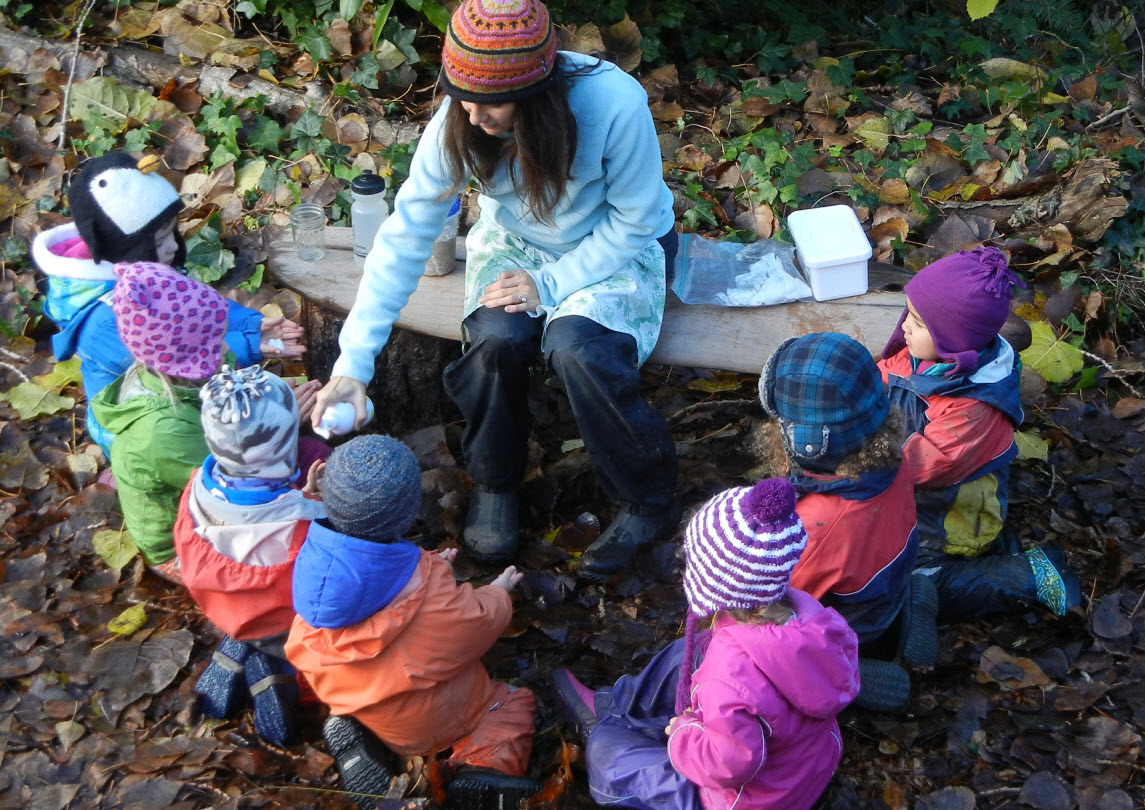
It may seem like only yesterday that your baby took those first steps and yet, suddenly, it’s time to think about preschool. With so many choices and styles of preschools, it’s easy to become overwhelmed and paralyzed by the pressure to pick the “right” one.
You may worry that your choice will have serious long-term impacts on your child’s life. There are many factors to consider, from basic logistics, such as tuition cost and the length of the school day, to overarching concerns, such as your child's personality type and which type of education would be the best fit. However, knowing the types of preschools out there and what distinguishes one from another will help simplify the process.
 Most preschools are described as either child-directed, meaning that the children lead, and teachers simply guide the learning process; or teacher-directed, meaning the teacher structures the activities and tells the children what to do, explains Myriah Rosengarten, a nationally certified school psychologist.
Most preschools are described as either child-directed, meaning that the children lead, and teachers simply guide the learning process; or teacher-directed, meaning the teacher structures the activities and tells the children what to do, explains Myriah Rosengarten, a nationally certified school psychologist.
Schools can also operate under a guiding philosophy of play-based or academic learning. Play-based programs are guided by the central belief that children learn best through play. Play is thought to build children’s interest and love of learning. Academic programs emphasize reading, math and science, and use structured, teacher-directed activities to promote foundational skills in these areas.
You might be looking for a specific kind of experience for your child or have the sense that your child will respond to certain approaches/environments better than others. Perhaps all the programs sound good. If you are interested in an à la carte experience, don’t worry: Some preschools offer a blend of styles, and many preschools label themselves more broadly as “play-based” or “academic.”
The more questions you ask a school’s representatives, the better you will understand how the curriculum works. Here’s a guide to the major preschool models.
Here's a guide to the major methods (and check out part two of our preschool primer, 10 Steps to Preschool).
Main Preschool Models and Approaches:
 Montessori
Montessori
Montessori is a child-directed approach that originated with Italian pediatrician/psychiatrist Maria Montessori and emphasizes the development of the whole child. Classrooms are of mixed ages (usually from 2 and a half or 3 to 6 years old), which helps to foster peer learning. Children are encouraged to learn at their own pace, with the goal of establishing independence, self-discipline and self-esteem. Teachers carefully prepare the environment with open shelving and specialized educational materials, including many wooden materials, math aids, beads and practical life items that are accessible to the children, such as small brooms, real coffee bean grinders, and zipper and lacing boards. In Montessori schools, children are given ample time to “work” individually at their own pace, and it's common to see children of all ages intensely focused on their chosen project at a tiny table or mat just for them.
STEM based
STEM, which stands for science, technology, engineering and mathematics, is a term often used in reference to science education. Based on research suggesting that it is important for students to be exposed to science at young ages, STEM-focused preschools seek to engage young children in scientific exploration by applying an inquiry-based approach to experiential activities, such as playing with building blocks. Children may be given materials and invited to “experiment.” The teacher may introduce relevant challenges, such as building the tallest possible structure. Activities are followed by discussion, during which students are encouraged to share their questions, observations, designs and conclusions. STEM-based programs integrate science exploration into daily activities, such as gardening and outdoor play.
HighScope
HighScope is a research-based curriculum that uses “active participatory learning” to help children build language and cognitive skills. Interactions between teacher and child are used to share control of the child’s learning and support children’s play. The classroom is designed for specific types of play and learning, and includes academic areas, such as writing and reading centers. The daily routine includes “play-do-review” (i.e., planning time, work time, recall time), which is a unique feature of the HighScope approach. HighScope (the organization behind the Perry Preschool Study) also emphasizes monitoring a child’s progress.
 Reggio Emilia
Reggio Emilia
Reggio Emilia is a child-directed approach that views children as active participants in the learning process. Originating in Italy, Reggio facilitates choice, problem solving, communication and relationships. The teacher’s role is to be a co-constructor of knowledge by building on a child’s ideas to help the child create new knowledge. The environment often emphasizes plant life, kitchens open to view, and photographs and detailed documentation of the children’s work. Parents are a vital component of this approach, and principles can also be incorporated at home.
Waldorf
Waldorf education is based on the ideas of Austrian philosopher Rudolf Steiner, the founder of anthroposophy. Waldorf education emphasizes nurturing the whole child by engaging the five senses in experiential, hands-on and artistic learning experiences. A teacher usually stays with the same group of children for several years. Free play with natural materials such as wood, leaves, shells, felt dolls and silk scarves is considered critical for fostering children’s imagination, and the collective, or group play, is emphasized. Waldorf schools are known for their strong environmental and outdoor emphasis (see below), and children are discouraged from playing with synthetic or electronic toys. Waldorf preschools and kindergartens emphasize creativity and imagination over academics.

Outdoor
The concept of outdoor preschool has been growing in popularity since emerging in the 1950s in Sweden and Denmark. There are at least a dozen outdoor preschool options in the Seattle area. These schools are generally child-directed, encouraging children to explore freely, follow their own impulses and connect to the natural world. Students in an outdoor learning environment can expect a lot of hands-on, experiential learning. The benefits of such an approach are thought to promote imaginative play and creativity, as well as strength, balance and good health. There are a variety of options to consider in this area, from total outdoor immersion to a regular exposure the outdoors. To learn more, read about outdoor preschool and specific programs in our area.
Language immersion
As the term indicates, the class is conducted partly or entirely in a foreign language. Because children are more adept at learning foreign languages at this age, the teacher will speak in the foreign language and rarely translate into English. (But if your child is not ready for full immersion, some programs do expose students to other languages through song, stories and other activities among their regular daily activities.)
Co-op preschools
Some parents opt to join a parent-run cooperative preschool or start one of their own. In these schools, parents take turns volunteering as teachers and caregivers. All of the members meet, usually monthly, and agree on what activities the children will pursue. Sometimes a professional teacher is hired. If the program is offered through a college, there will be a parent education component. The association with the college makes it possible for the co-op to be insured and for the overall cost to be relatively low. However, such a venture does take a large commitment of time and energy on the parents’ part. Co-op preschools might make use of a particular curriculum or be more free-form. Sometimes co-op schools are scheduled for only a few days or hours a week.
Inclusive
In an inclusive preschool setting, children who are developing typically learn side by side with children who have developmental delays or learning disabilities. Research indicates that children with special needs are capable of greater progress in an inclusive environment, and that typically developing students also benefit. Ilene Schwartz, Ph.D., director of the University of Washington’s Experimental Education Unit, puts it this way: “Inclusion is a celebration of diversity put into action. All children and adults who participate in inclusive settings benefit as they work together, play together and develop a diverse community of learners.”









